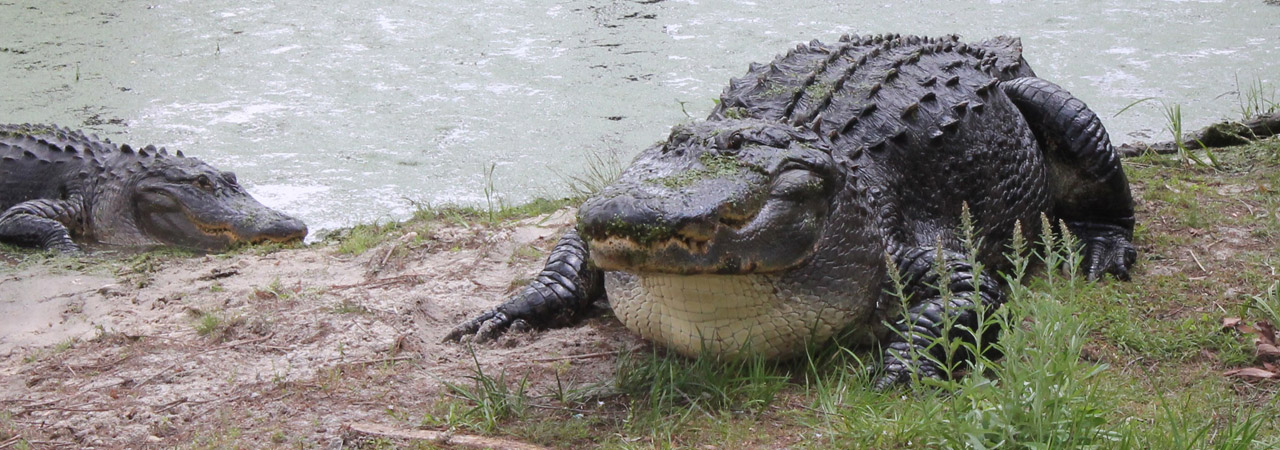All About Reptiles
While Alligator Alley is home to over 600 alligators, it is also crawling with scaly friends of all kinds. From snakes and turtles to tortoises and frogs, we have countless reptiles to interact with at the farm. Here is all you need to know about reptiles at Alligator Alley:

Reptiles aren’t graceful eaters
While many animals chew their food before swallowing, reptiles swallow their food whole or tear it apart with their teeth and claws. Want to see it in action? Come to our live feedings every day at 11:00 a.m., 1:00 p.m. and 4:00 p.m.
Reptiles prefer the sun
Reptiles are ectothermic, or cold-blooded meaning they can’t regulate their body temperature on their own. Relying on the sun to stay warm, you’ll often see our alligators and other reptiles basking in it in the warmer months. Once the temperature drops below 70 degrees, alligators stop eating but are still visible on sunny days. Below 55 degrees is when alligators go dormant and spend the majority of their time underwater.
Reptiles are ageless
Did you know? Reptiles are one of the species that live the longest. Our alligators on the farm typically live to around age 70, while tortoises normally live to be 150 years old and some even close to 200 years old!
No gender-reveal parties for reptiles
The gender of a baby reptile is determined by temperature. That’s right. The temperature at which the egg develops determines if the reptile will be male or female. Eggs at temperatures greater than 86 degrees produce females, while eggs at temperatures lower than 77 degrees produce males.
Reptiles do not hibernate
Instead of hibernating in the colder months like most mammals, reptiles spend the fall and winter months brumating. Brumating is similar to hibernating, but reptiles do not go dormant. Instead, they may not eat, drink or move as frequently but will remain deep in the water or ground. Reptiles normally begin brumating when temperatures dip below 70 degrees. Don’t worry though, they’ll be back in action as soon as the sun comes out and the water warms up again.

Protecting reptiles from potential threats
Like many other species, reptiles currently face threats to their environments. Habitat destruction threatens reptiles as land is developed and trees are cut down. The loss of habitat causes reptiles to have to go in search of other places to live. Pollution is another threat posed to reptiles that can harm or even kill them. Reptiles can also be harvested for their skins, eggs and meat leading to overexploitation. Next time you encounter a reptile friend, be mindful of their home and do your part to let them live a healthy and safe life.
That’s all you need to know about reptiles! All that’s left is a visit to Alligator Alley where you can interact with and even hold our snakes, turtles and frogs for yourself!



Sorry, the comment form is closed at this time.